An American woman and her Italian husband enjoy comparing the norms of their respective upbringings, revealing to the world the many cultural differences they encounter in their daily lives.
Alessio and Jessi Pasini, who have 2.2 million followers on their joint TikTok account @thepasinis, have built an audience by exploring the differences in their cultural backgrounds and highlighting the various contrasts in a fun and performative way for fans.
In one of their viral series, the Nashville-based duo analyzed daily practices in Europe versus parallel ones in the United States, pointing out disparities in everything from dating formats to preferred candy brands to coffee-drinking habits.
At one point, Alessio posed next to Jessi, with him eating a jar of Nutella, while she is seen eating a spoonful of Skippy brand peanut butter.

An American woman and her Italian husband enjoy comparing the norms of their respective upbringings.
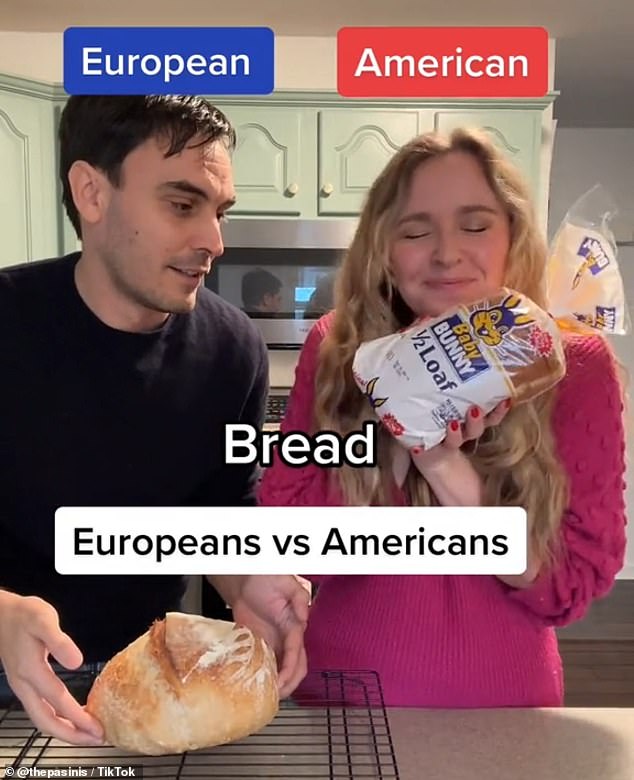

Alessio and Jessi Pasini, from Italy and Nashville respectively, have gone viral after sharing the funny cultural differences they found, even with bread.
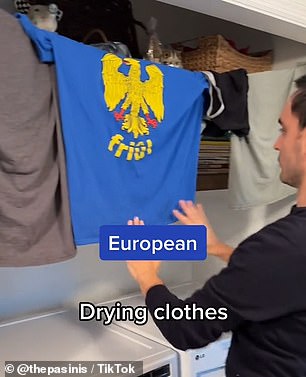

Alessio chose Kinder Bueno as ‘best candy’ while Jessi opted for Reese’s
And the two dove into about two dozen more examples across eight videos, going over a few examples in each sub-20-second clip.
The two represented how Americans wear their shoes at home, while Europeans leave them outside.
They then pretended to discuss placing decimals in numerical amounts of money: most European countries would write one thousand euros and zero cents as €1,000.50, while in American dollars, the same number would be like $1,000.00.
They also showed side-by-side date formats, with Americans stylizing the date as month-day-year and Europeans writing it as day-year-month.
As far as coffee drinking habits go, Alessio downed a shot of espresso in less than the time it took Jessi to fill the cup with coffee from the pot of the coffee maker.
While Americans have an electric clothes dryer, many Europeans prefer to dry their clothes outdoors.
In the couple’s depiction, Europeans also tend to eat more slowly and with their forks down, while Americans tend to devour food more quickly and with their forks up.
The choice of the ‘best candy’? Jessi opted for Reese’s, which combines chocolate and peanut butter; Alessio chose Kinder Bueno, which is a wafer filled with hazelnut cream and chocolate.




The couple noted that while Europeans will rest the day after Christmas, for Americans, it’s time to get back to work.


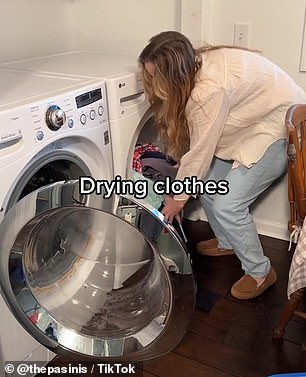

Europeans will hang their clothes to dry, while Americans depend on an electronic dryer


The duo demonstrated how they would design the number one thousand euros or dollars and zero cents with the opposite use of the comma and decimal point.
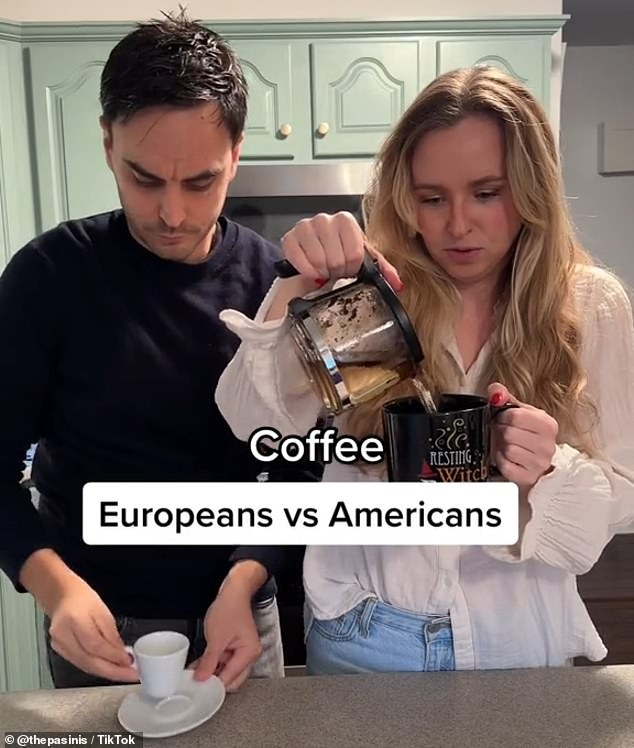

Alessio downed an espresso in the time it took Jessi to fill a cup with filtered coffee.
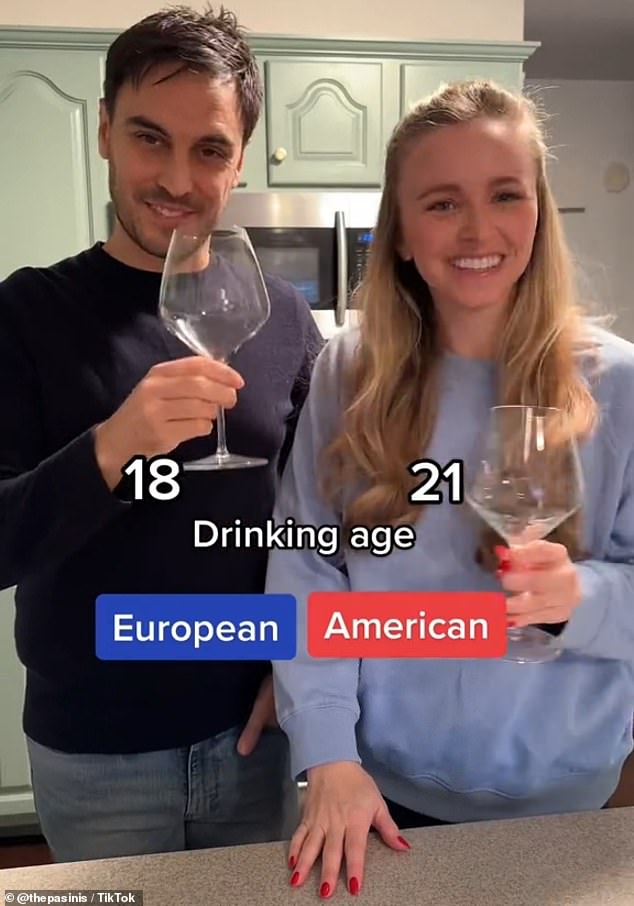

Americans cannot drink legally until age 21, while Europeans can start drinking legally at age 18.
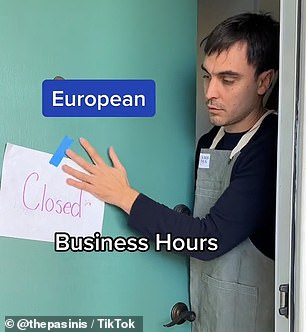



While European stores have short opening hours, American stores remain open 24/7.
As for bread, Alessio showed off a loaf of freshly baked Italian bread; Jessi grabbed a loaf of white bread already cut into a plastic wrapper.
When it comes to ice cube preferences, there’s generally a “yes” for Americans and a “no” for Europeans when it comes to cold drinks.
To symbolize the stark difference in health care (Europeans’ costs are covered by the government), Jessi, as an American, pretended to cry over a bill while Alessio, as a European, awkwardly patted her shoulder.
When it comes to vacations, Europeans tend to enjoy about twice as much annual vacation time as Americans.
And, while the ‘average parental leave’ in Europe is 21 weeks, for the average American it’s a whopping zero weeks.
At the same time, the duo acknowledged that taxes in Europe were much higher than those in the United States.
The day after Christmas, for Americans, meant going back to work; For Europeans, it’s simply more relaxing to be at home.
American drinking age? 21. In Europe? Only 18 years old. But the driving age for Europeans is 18; Americans are 16 years old.
As for American customer service, Jessi described an extremely accommodating employee upon returning; For the fictional European store worker, returns and refunds were not an option on the table.
Likewise, while European stores are famous for having short opening hours, Americans happily welcome customers into their stores 24/7.
While Americans “drive everywhere,” Europeans prefer to “walk everywhere.”
And, according to Alessio and Jessi’s interpretations, while Americans act more “polite” outwardly, Europeans are “frank.”
